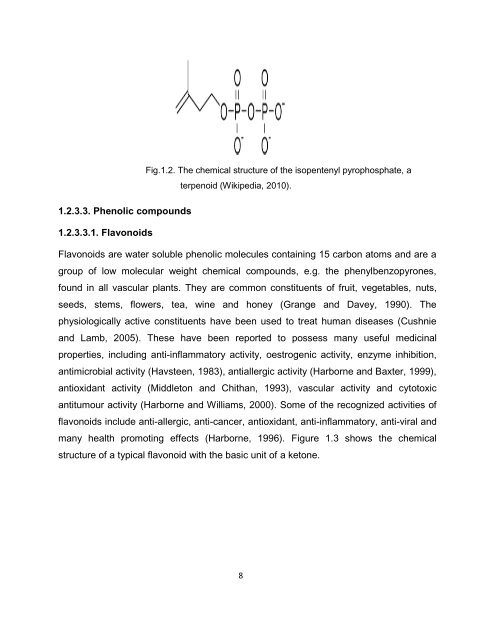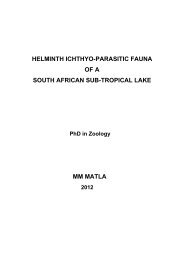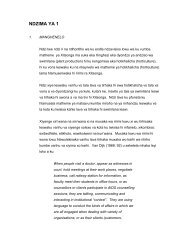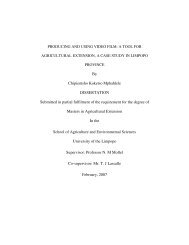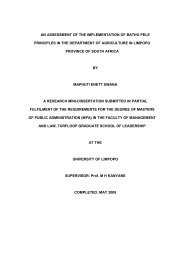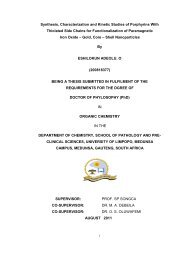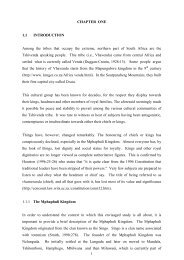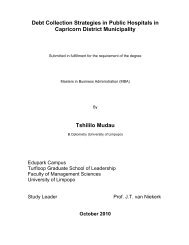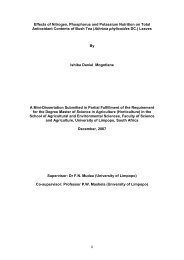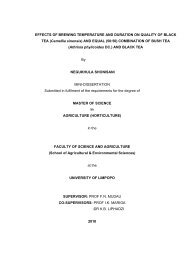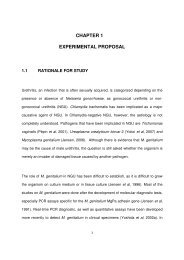Mmushi T MSc (Microbiology).pdf
Mmushi T MSc (Microbiology).pdf
Mmushi T MSc (Microbiology).pdf
You also want an ePaper? Increase the reach of your titles
YUMPU automatically turns print PDFs into web optimized ePapers that Google loves.
Fig.1.2. The chemical structure of the isopentenyl pyrophosphate, a<br />
terpenoid (Wikipedia, 2010).<br />
1.2.3.3. Phenolic compounds<br />
1.2.3.3.1. Flavonoids<br />
Flavonoids are water soluble phenolic molecules containing 15 carbon atoms and are a<br />
group of low molecular weight chemical compounds, e.g. the phenylbenzopyrones,<br />
found in all vascular plants. They are common constituents of fruit, vegetables, nuts,<br />
seeds, stems, flowers, tea, wine and honey (Grange and Davey, 1990). The<br />
physiologically active constituents have been used to treat human diseases (Cushnie<br />
and Lamb, 2005). These have been reported to possess many useful medicinal<br />
properties, including anti-inflammatory activity, oestrogenic activity, enzyme inhibition,<br />
antimicrobial activity (Havsteen, 1983), antiallergic activity (Harborne and Baxter, 1999),<br />
antioxidant activity (Middleton and Chithan, 1993), vascular activity and cytotoxic<br />
antitumour activity (Harborne and Williams, 2000). Some of the recognized activities of<br />
flavonoids include anti-allergic, anti-cancer, antioxidant, anti-inflammatory, anti-viral and<br />
many health promoting effects (Harborne, 1996). Figure 1.3 shows the chemical<br />
structure of a typical flavonoid with the basic unit of a ketone.<br />
8


